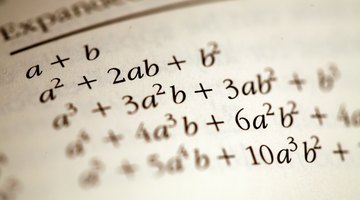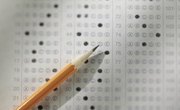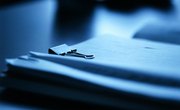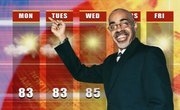In the biological sciences, researchers including students like you study how living organisms work both inside and out. Since biology is the study of all living things, scientists in this field have a lot of ground to cover. To help us understand our world and ourselves a little better, these biologists collect data. Their studies can range from recording sound files of bird calls in the jungle to measuring the growth of cancer cells in a laboratory.
Without statistical analysis, all of the data collected by biologists wouldn’t mean much. Statistical tests used in biology serve a number of functions, including measuring correlation, comparing means of variables and predicting change in variables. The types of statistical tests used include chi-squares, t-tests, ANOVA, regression tests and more. Because of the role of statistics in biology, you will have to take multiple courses in statistics for biological sciences if you want to major in biology.
What Is the Role of Statistics in Biology?
Statistical tests used in biology help provide scientists with insight about processes that are either too vast, too microscopic or too numerous to be analyzed by other methods. The main role of statistics in biology is to test hypotheses. However, other statistical tests are used in biology to help set up experiments and interpret results.
Some statistical concepts can help choose sample size or which organisms to study from a group. Although it may seem like choosing subjects from a group at random would provide the best group to analyze, random samplings can accidentally produce patterns that aren’t naturally occurring outside the sample group. Biologists are careful to use statistical programs to help them with sampling in order to keep their findings pure.
What Types of Statistical Tests Do Biologists Use?
The basic types of statistical tests used in biology fall into four basic categories: correlational, comparison of means, regression and nonparametric. Correlational tests measure how closely two or more variables are related. Comparisons of means measure the difference between the means of two or more sets of variables or datasets. Regressions analyze if a change in one variable can predict change in another, and nonparametric tests are used for datasets that don’t meet the requirements for parametric analysis tests.
How Do Biologists Interpret Data?
Many biological experiments require the interpretation of large datasets that are too large or too complicated for scientists to analyze by hand. To perform many of the statistical tests used in biology, researchers operate specialized instruments in the field and statistical software in the lab specifically designed for data processing.
The instruments biologists use in the field vary greatly according to their research specialty. Many scientists collect visual samples using photography. Some researchers study animal migratory patterns with GPS chips and software. One very specialized instrument used by scientists in the field is a Kestral wind meter, which measures wind speed and can be useful in analyzing the effects of climatological conditions on animals in a specific location.
When analyzing data in the lab, researchers put data processing software to work. Three programs commonly used for this purpose in biology labs are the Statistical Analysis System, Statistical Product and Service Solution and Strata. Using these computer programs often requires very specialized training, including preparation in elementary programming languages. Most students who progress to biological studies at the graduate level should expect to become versed in one or more of these computer programs.
In a few situations, such as field studies of whale dorsal fin markings, biologists rely on observation and descriptive techniques to collect data. In such cases, descriptive observations are often paired with numerical data to provide a more holistic understanding of the subject being studied.
Related Articles
Resources
Writer Bio
Rebecca Renner is a teacher and college professor from Florida. She loves teaching about literature, and she writes about books for Book Riot, Real Simple, Electric Literature and more.











